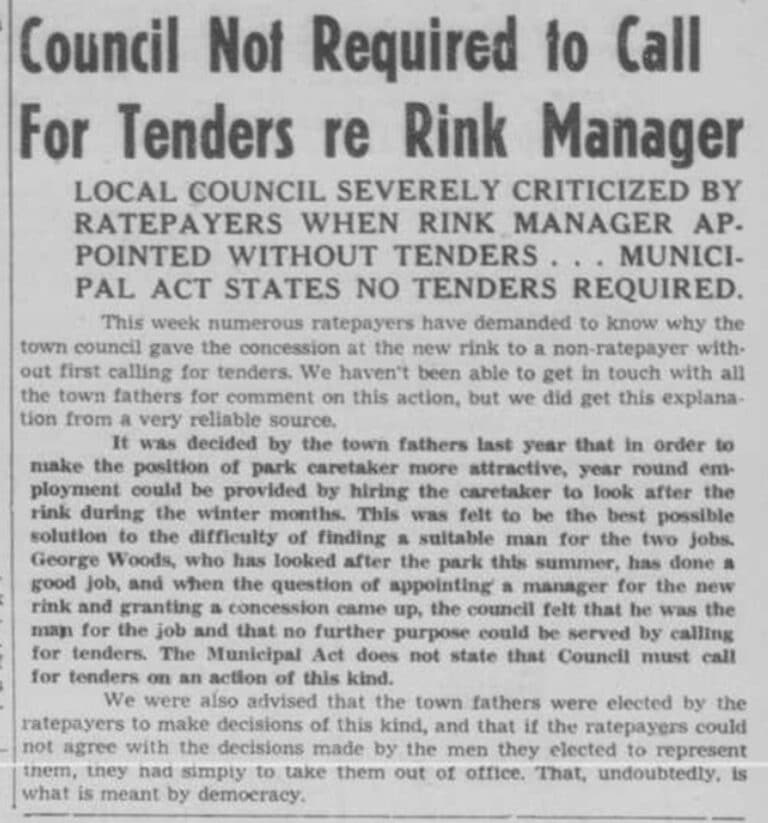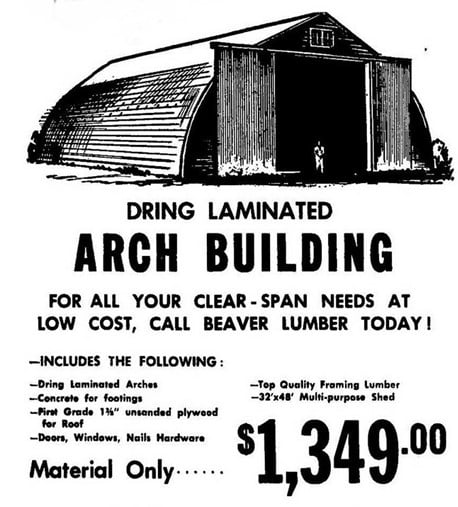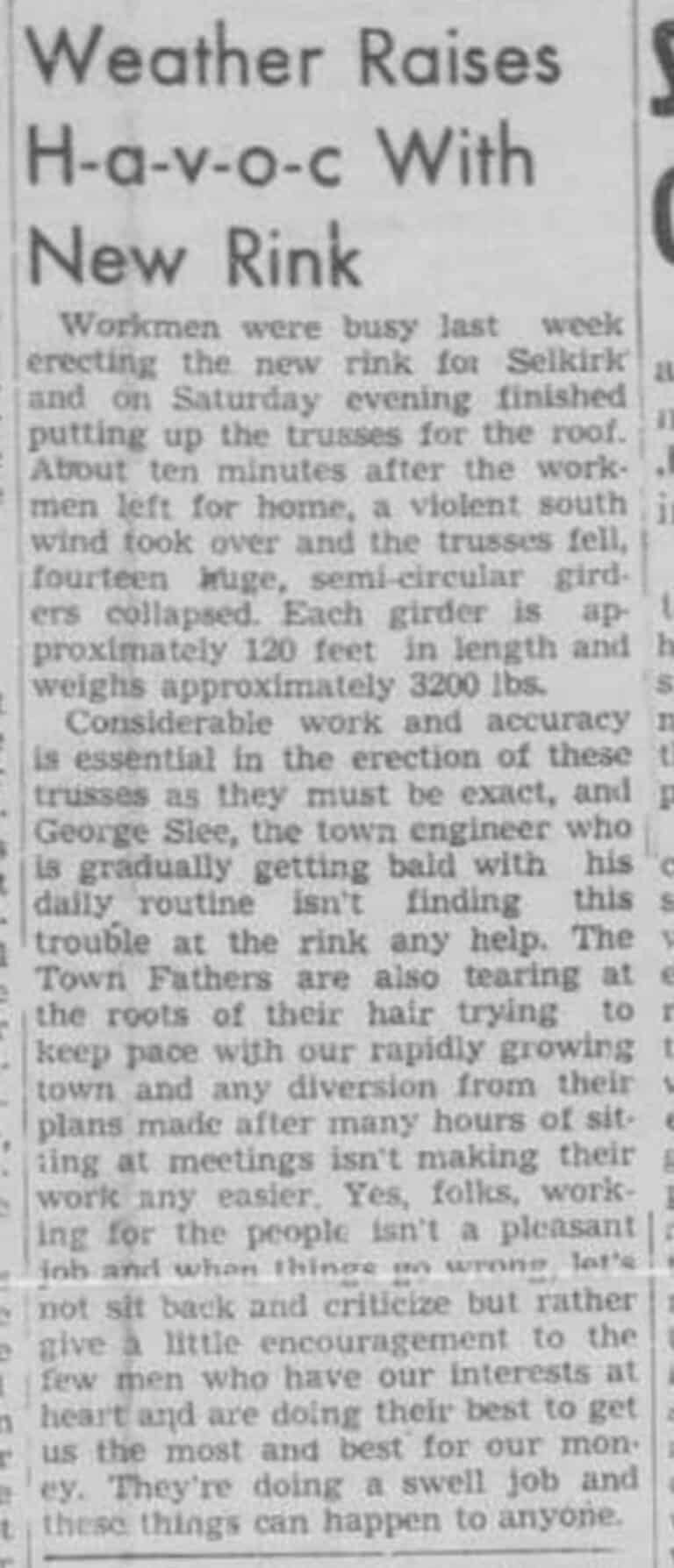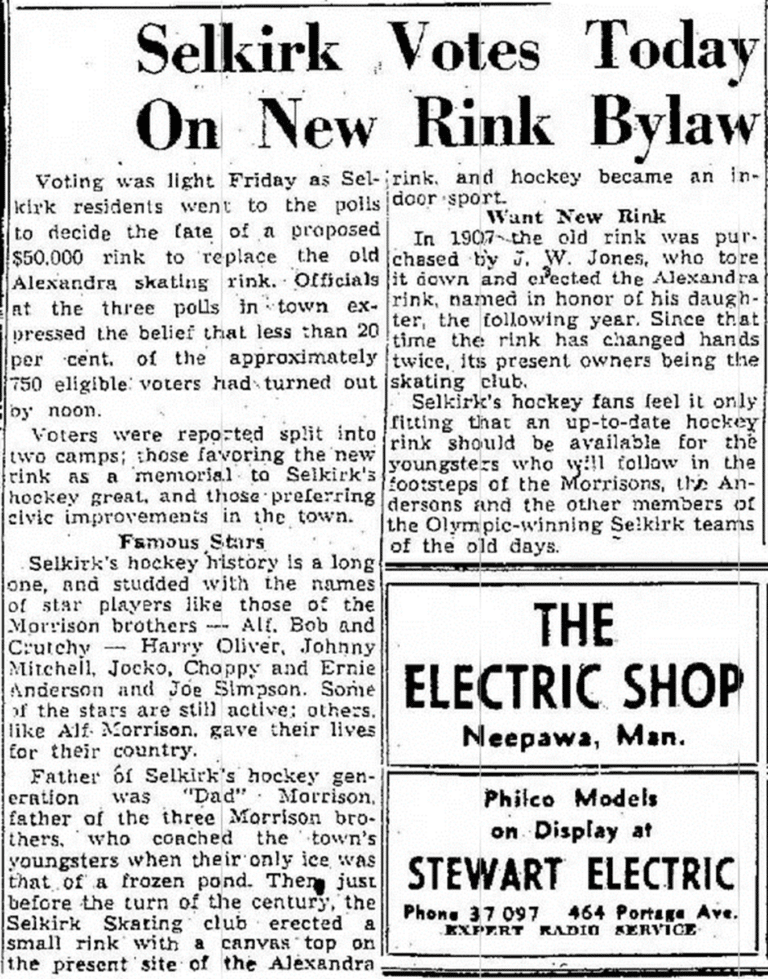Selkirk’s first indoor arena was established in 1907. John W. Jones purchased the outdoor rink used by the Selkirk Skating Club on Fox Avenue near Main Street. Over it, he constructed what one account describes as a “concave-shaped, tin-covered monster” and christened it ‘Alexandra’, after his daughter.

In its heyday of the 1930s and early 1940s, the Alexandra Rink was owned by Jimmy Skinner Sr., the hot dog entrepreneur and father of the legendary Detroit Red Wings coach/general manager who shared his name. In the mid-1940s, it was taken over by the Selkirk Skating Club.
Municipalities across the country needed to revaluate how sports and recreation services were provided in their communities after the Second World War. Thousands of fit, young men had returned home and demanded something better than the options offered by small, private athletic clubs and religious organizations.
For many communities, this meant establishing recreation departments and investing in new facilities accessible to the public at large. Selkirk was no different.
In April 1948, representatives from several community agencies met at the Selkirk library to form a ‘rink fact-finding committee’ that would explore the feasibility of constructing and financing a new indoor rink for the town. J. C. Erickson of the Kinsmen Club of Selkirk was chosen as chair.
The committee looked at examples of recently built facilities in other communities. They recommended to the town council that a modified version of the new Killarney rink could be funded by the civic government for about $50,000. But community organizations would need to help raise funds to provide furniture and equipment.
The town council agreed to the plan. A referendum was held on August 6, 1948, to seek permission to borrow up to $50,000 through debentures to make a new indoor rink a reality. Ratepayers voted 343 to 163 in favour of the project.
A New Facility
Council wasted little time getting the new rink underway. Mayor W. E. Gordon and Kinsmen’s J. C. Erickson participated in a sod-turning ceremony on city-owned land on September 28, 1948.
The contractor for the project was local builder Ralph Walterson. His team of paid workmen was supplemented in the evenings by volunteer work parties.
The Selkirk Enterprise reported in late July 1949 that, “…the building of the new rink is progressing with gratifying speed,”. The arena section that covered the regulation size rink and 1,500 or so spectator seats was already in place. It was built using the Dring Laminated Beam system manufactured by Dring Bros. Of Boissevain. The fourteen massive 36.5-metre-long beams weighing 1,450 kilograms each meant that there would be no interior columns to block the views of spectators.
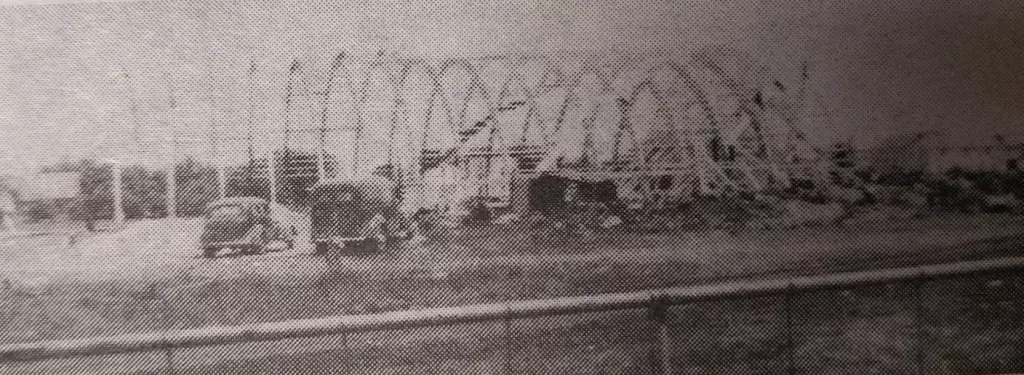
Next was the construction of the building’s annex. It housed the mechanical systems, main entrance, cashier’s office, canteen and two dressing rooms with shower facilities.
The new rink was ready to host its first ice-free event on September 24, 1949 — the Selkirk Rotary Club Carnival — which helped raise money for furnishings for the building. On October 31st, the Kinsmen Club used it for their Kiddies Halloween Party which attracted around 1,000 children.

The new facility, of course, needed a name. Town council followed the recommendation of town engineer George Slee that they avoid the term ‘rink’, as it would also be used in summer months for fairs and trade shows. He preferred ‘arena’, which he defined as ‘a place for the congregation and recreation of people’. Council agreed, and the facility was officially named Selkirk Arena.
The Official Opening
The official opening of the Selkirk Arena was hosted by the Kinsmen Club of Selkirk on the evening of Friday, December 9, 1949. Over 800 people paid between 50 cents and one dollar to attend, with proceeds going towards the purchase of a public address system.

94-year-old John W. Jones, the man who built and operated the Alexandra Rink for over 20 years, had the honour of cutting the ribbon. Kinsmen Club president Stan Mowatt welcomed the crowd, Mayor W. E. Gordon spoke on behalf of the town, and Reverend E. Eglison of the Selkirk Ministerial Association provided an opening prayer. The remainder of the program was a series of skating performances by members of the Winnipeg Winter Club.
The Selkirk Arena’s inaugural hockey game took place the following night — Saturday, December 10 — with the Selkirk Seniors hosting the Winnipeg Canadiens. Unfortunately, extremely warm temperatures that afternoon meant that the ice did not freeze properly, and action came to a near standstill shortly after the game began. Winnipeg won by a score of 6 – 2.
“The arena itself is a proud dedication to a big-little sports city,” said Al Cooper of the Winnipeg Free Press, “that finds hockey as necessary as eating and sleeping. It will be around for many a winter to come.”
Unfortunately, the old Alexandra Rink would not have many winters left in its future. The building was turned over to the Selkirk Youth Council for use as a year-round recreation centre in 1950. A series of minor renovations undertaken by the organization discovered that the old rink was structurally unsound. In the autumn of 1951, its use as a public gathering place was prohibited due to safety reasons. Estimates to make the necessary repairs to the building were in the region of $8,000 which was too rich for the Youth Council and the town. The Alexandra Rink was town down in 1955.
The town sold the vacant land for $1 to the Rotary Club of Selkirk in December 1962 so that they could construct Selkirk Rotary Manor, a seniors housing complex.
Selkirk Arena Collection
To hear more stories about the Selkirk Arena visit the Selkirk Museum YouTube channel
Sources
Lethbridge Herald, Beaver Lumber Ad 1965
Selkirk Enterprise 1949, 1951, 1952, 1956
Selkirk Journal 1990
Selkirk Record 1907, 1927, 1930
Stories of Selkirk’s Pioneers and Their Heritage, Kenneth G. Howard
Winnipeg Free Press 1948, 1949
Winnipeg Tribune 1948, 1949





















